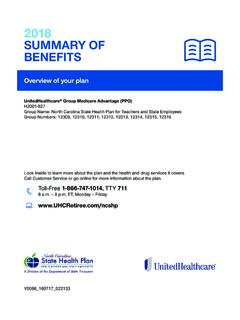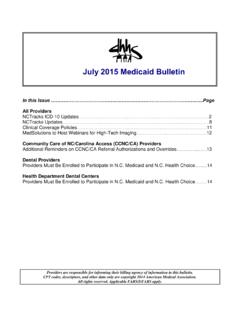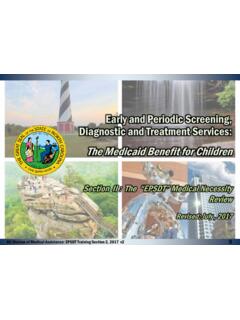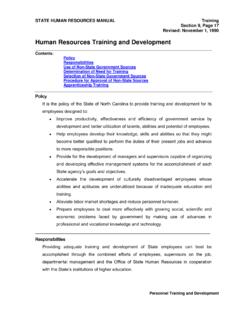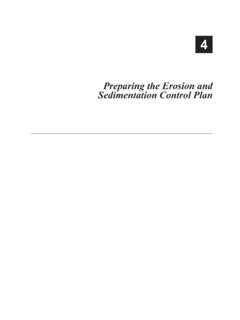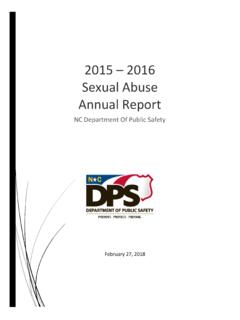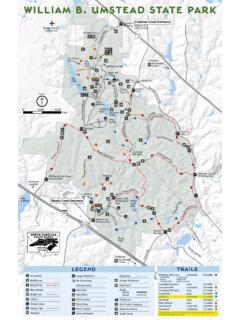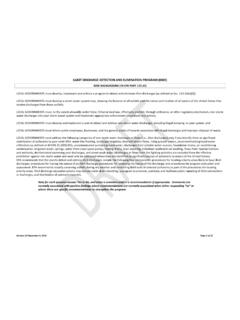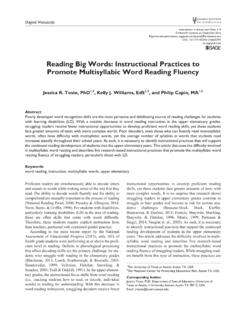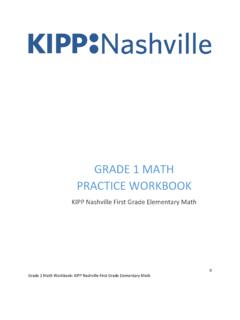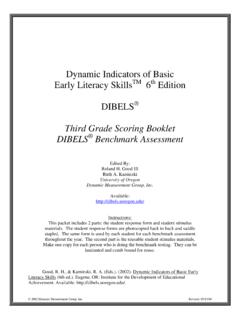Transcription of 4th Grade Mathematics Unpacked Contents - NC
1 4th grade Mathematics Unpacked Contents For the new Standard Course of Study that will be effective in all North Carolina schools in the 2018-19 School Year. This document is designed to help North Carolina educators teach the 4th grade Mathematics Standard Course of Study. NCDPI staff are continually updating and improving these tools to better serve teachers and districts. What is the purpose of this document? The purpose of this document is to increase student achievement by ensuring educators understand the expectations of the new standards. This document may also be used to facilitate discussion among teachers and curriculum staff and to encourage coherence in the sequence, pacing, and units of study for Grade -level curricula.
2 This document, along with on-going professional development, is one of many resources used to understand and teach the NC SCOS. What is in the document? This document includes a detailed clarification of each standard in the Grade level along with a sample of questions or directions that may be used during the instructional sequence to determine whether students are meeting the learning objective outlined by the standard. These items are included to support classroom instruction and are not intended to reflect summative assessment items. The examples included may not fully address the scope of the standard. The document also includes a table of Contents of the standards organized by domain with hyperlinks to assist in navigating the electronic version of this instructional support tool.
3 How do I send Feedback? Please send feedback to us at and we will use your input to refine our unpacking of the standards. Thank You! Just want the standards alone? You can find the standards alone at North Carolina Department of Public Instruction 4th grade Unpacking Document Rev. June 2018 2 North Carolina Course of Study 4th grade Standards Standards for Mathematical Practice Operations & Algebraic Thinking Number & Operations in Base Ten Number & Operations-Fraction Measurement & Data Geometry Represent and solve problems involving multiplication and division. Use the four operations with whole numbers to solve problems. Gain familiarity with factors and multiples.
4 Generate and analyze patterns. Generalize place value understanding for multi-digit whole numbers. Use place value understanding and properties of operations to perform multi-digit arithmetic. Extend understanding of fractions. Build fractions from unit fractions by applying and extending previous understandings of operations on whole numbers. Use unit fractions to understand operations of fractions. Understand decimal notation for fractions, and compare decimal fractions. Solve problems involving measurement. Solve problems involving area and perimeter. Represent and interpret data. Understand concepts of angle and measure angles. Classify shapes based on lines and angles in two-dimensional figures.
5 North Carolina Department of Public Instruction 4th grade Unpacking Document Rev. June 2018 3 Standards for Mathematical Practice Practice Explanation and Example 1. Make sense of problems and persevere in solving them. Mathematically proficient students in Grade 4 know that doing Mathematics involves solving problems and discussing how they solved them. Students explain to themselves the meaning of a problem and look for ways to solve it. fourth graders may use concrete objects or pictures to help them conceptualize and solve problems. They may check their thinking by asking themselves, Does this make sense? They listen to the strategies of others and will try different approaches.
6 They often will use another method to check their answers. 2. Reason abstractly and quantitatively. Mathematically proficient fourth Grade students should recognize that a number represents a specific quantity. They connect the quantity to written symbols and create a logical representation of the problem at hand, considering both the appropriate units involved and the meaning of quantities. They extend this understanding from whole numbers to their work with fractions and decimals. Students write simple expressions, record calculations with numbers, and represent or round numbers using place value concepts. 3. Construct viable arguments and critique the reasoning of others. In fourth Grade mathematically proficient students may construct arguments using concrete referents, such as objects, pictures, and drawings.
7 They explain their thinking and make connections between models and equations. They refine their mathematical communication skills as they participate in mathematical discussions involving questions like How did you get that? and Why is that true? They explain their thinking to others and respond to others thinking. 4. Model with Mathematics . Mathematically proficient fourth Grade students experiment with representing problem situations in multiple ways including numbers, words (mathematical language), drawing pictures, using objects, making a chart, list, or graph, creating equations, etc. Students need opportunities to connect the different representations and explain the connections.
8 They should be able to use all of these representations as needed. fourth graders should evaluate their results in the context of the situation and reflect on whether the results make sense. 5. Use appropriate tools strategically. Mathematically proficient fourth grader students consider the available tools (including estimation) when solving a mathematical problem and decide when certain tools might be helpful. For instance, they may use graph paper or a number line to represent and compare decimals and protractors to measure angles. They use other measurement tools to understand the relative size of units within a system and express measurements given in larger units in terms of smaller units.
9 6. Attend to precision. As fourth grader students develop their mathematical communication skills, they try to use clear and precise language in their discussions with others and in their own reasoning. They are careful about specifying units of measure and state the meaning of the symbols they choose. For instance, they use appropriate labels when creating a line plot. 7. Look for and make use of structure. In fourth Grade mathematically proficient students look closely to discover a pattern or structure. For instance, students use properties of operations to explain calculations (partial products model). They relate representations of counting problems such as tree diagrams and arrays to the multiplication principal of counting.
10 They generate number or shape patterns that follow a given rule. 8. Look for and express regularity in repeated reasoning. Students in fourth Grade should notice repetitive actions in computation to make generalizations Students use models to explain calculations and understand how algorithms work. They also use models to examine patterns and generate their own algorithms. For example, students use visual fraction models to write equivalent fractions. Return to Standards North Carolina Department of Public Instruction 4th grade Unpacking Document Rev. June 2018 4 Operations and Algebraic Thinking Represent and solve problems involving multiplication and division. Interpret a multiplication equation as a comparison.
